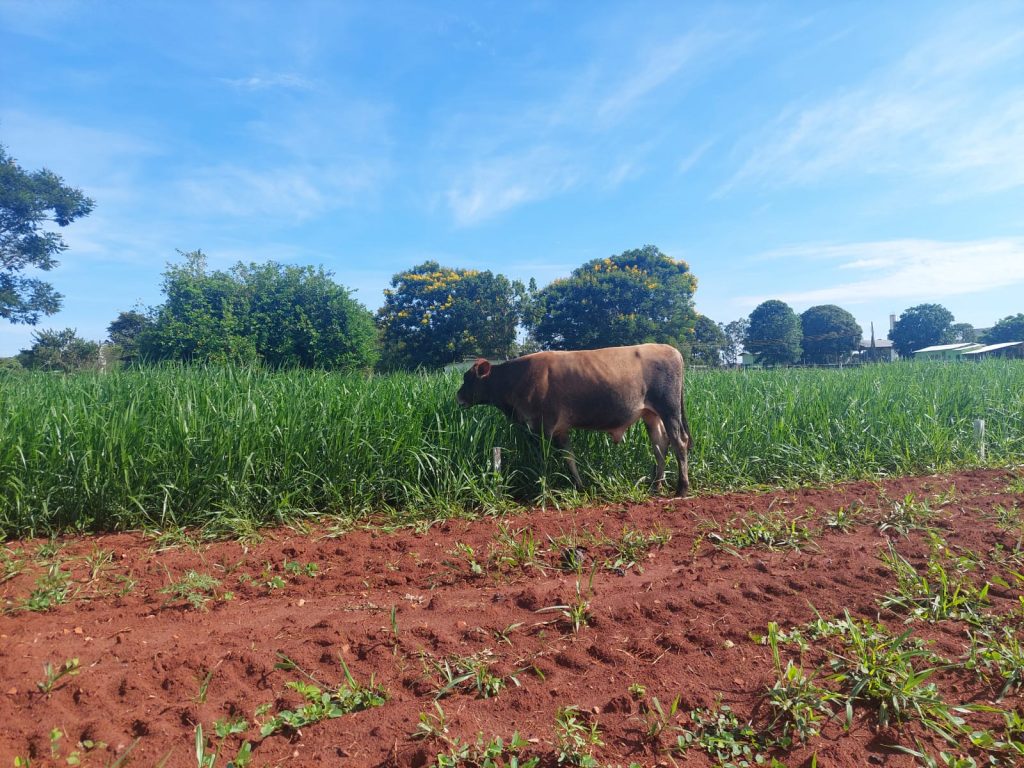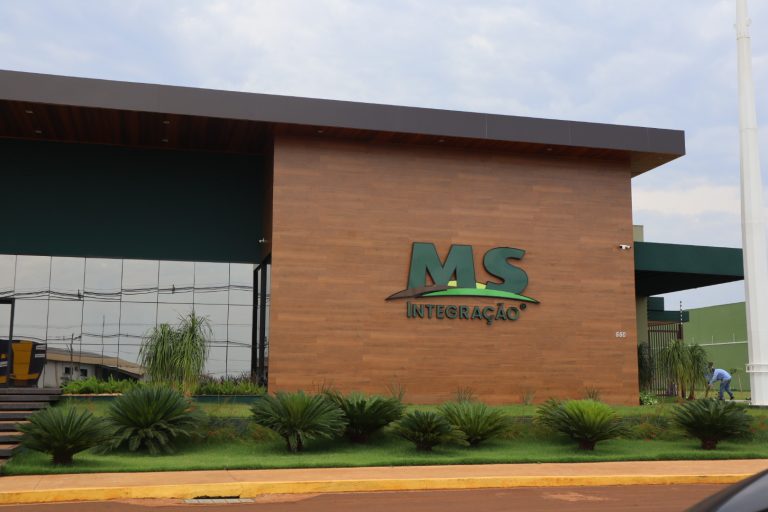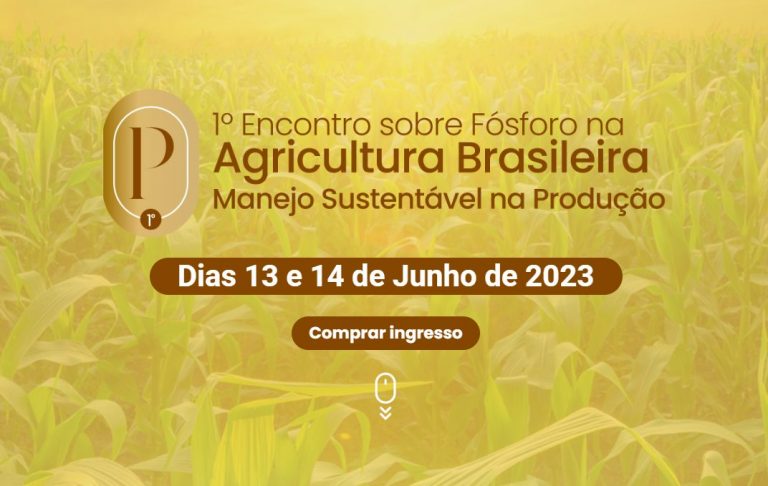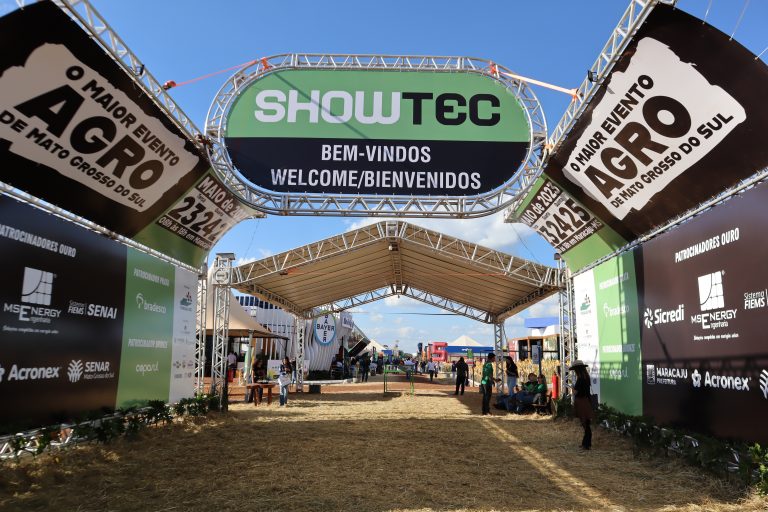A unidade experimental está sendo conduzida no Centro de Pesquisa e Capacitação da Agência de Desenvolvimento Agrário e Extensão Rural (Cepaer/Agraer) em Campo Grande/MS com latitude 20º 25’ 23” S, longitude 54º 40’ 03”, altitude de 556 m e clima local Aw, no período de maio de 2022 a novembro de 2024. O projeto conta com o financiamento da FUNDECT em parceria com a Edem, UEMS e UCDB. Sendo cabeceado pelo professor Dr. Sandro Cardoso.
Pesquisadores:
Eng. Agr. Dr. Sandro Cardoso – AGRAER/CEPAER
Eng. Agr. Dr. Edimilson Volpe – AGRAER/CEPAER
Eng. Agr. M.Sc Antonino H. Dias Neto – AGRAER/CEPAER
Eng. Agr. Prof. Dr. Jolimar Antônio Schiavo – UEMS/AQUIDAUANA-MS
Zoot. Dra. Profa. Tatiana da Costa Moreno Gama – UCDB
O delineamento experimental utilizado é o fatorial em blocos casualisados (DBC). Os tratamentos foram pré definidos com 04 doses 0, 75, 150 e 300 kg ha-1 de P2O5 (FNRB), 04 doses 0, 100, 200 e 400 kg ha-1 de K2O (KMC), e um tratamento químico com 150 kg ha-1 de P2O5 (Super Triplo) e 200 kg ha-1 de K2O (Cloreto de Potássio), totalizando 17 tratamentos, quatro repetições e 68 parcelas. Cada parcela mede 5 m x 5 m ou 25 m2; totalizando 425 m2 por bloco com área total experimental de 1700 m2.
Inicialmente foram coletadas amostras de solo (Latossolo Vermelho Distrófico) de 0 – 20 cm, analisadas quimicamente em laboratório (EMBRAPA, 2011), para as correções de solo de acordo com a exigência da espécie forrageira exceto para fósforo e potássio que foram pré-definidas.
Será utilizado como fonte de nitrogênio a uréia na quantidade de 100 kg ha-1 ano-1. O calcário utilizado foi o calcário dolomítico, de enxofre o gesso agrícola e de micronutrientes o FTE BR-12. Com exceção da uréia que será distribuída a lanço 50% da dose no início do período das águas (após a saída dos animais no primeiro pastejo de uniformização) e 50% próximo ao final do período das águas de cada ano, os demais insumos foram incorporados em única aplicação inicialmente com grade niveladora na implantação em novembro de 2022.
Em 16 de novembro de 2022 logo após o preparo (Arado; Grade Aradora e Grade Niveladora) e as correções do solo, foi realizado a demarcação das parcelas, e a semeadura manualmente em linha a cv. Piatã com espaçamento de 20 cm entre linhas e aproximadamente 4 cm de profundidade.
Em seguida as sementes foram cobertas manualmente em todas as parcelas, nas quantidades de 4,0 kg ha-1 de sementes puras viáveis. O controle de invasoras está sendo realizado de forma manual nas parcelas e mecânico e químico nos corredores.
Após a semeadura, foi construída uma cerca no entorno do experimento e conduzido água por mangueiras até uma pilheta (depósito de água) para o manejo do pasto com a utilização de animais.
No dia 06 de fevereiro de 2023, 80 dias após a semeadura foram introduzidos animais de pequeno porte (novilhas e bezerros) na área com o objetivo de uniformizar e rebaixar o pasto, num pastejo rápido para quebrar a dominância apical e estimular o enraizamento e o perfilhamento.
Após aproximadamente 20 dias da saída dos animais serão introduzidos um novo lote de animais (novilhas e vacas em lactação) para rebaixar o pasto a aproximadamente 20 cm de altura ao nível do solo.
Em seguida os animais serão retirados da área e será realizada a primeira dose (50%) da adubação nitrogenada. Sempre que as plantas forrageiras atingirem em média 35 a 40 cm de altura serão realizados os cortes de avaliação da massa seca verde (MSV) em todas as parcelas com posterior entrada dos animais até rebaixamento a 20 cm de altura.
Caso as plantas da área experimental não esteja totalmente homogêneas (20 cm) após a retirada dos animais, será utilizado roçadeira costal para a uniformização, e o material residual será posteriormente retirado das parcelas.
As avaliações anuais de produção serão realizadas durante o ciclo das águas e das secas iniciando-se em 2022/2023 e findando em 2023/2024. O intervalo entre os cortes não será pré-estabelecido, para tanto, análises semanais do dossel serão realizadas, e considerar-se-á como altura/intervalo ideal para o corte quando a amostra média das plantas de um dos tratamentos experimentais (realizando-se oito leituras em pontos representativos da condição média da vegetação de cada parcela) atingirem altura de aproximadamente 40 cm do nível do solo.
O futuro do projeto
Nesta ocasião, serão coletadas uma amostra aleatoriamente de 2,5 m2 de capim em cada parcela, desprezando-se 1 m de bordadura, utilizando podador costal motorizado com corte a 20 cm de altura ao nível do solo para determinação da produção de massa seca verde (MSV). Deste total, após pesados á campo, será retirada uma sub amostra de forragem colhida de cada parcela, na porção de aproximadamente 500 g, que serão acondicionados em sacos plásticos, para posterior pesagem em laboratório. Após a pesagem, o material será acondicionado em sacos de papel (identificados) e levados para secagem em estufa de circulação forçada de ar com temperatura de 65-70ºC, durante 72 horas, para estimativa da massa seca total (MST) da forragem produzida.
Para determinação do fósforo (P) e do potássio (K) nas lâminas foliares serão coletadas um dia antes de se efetuar os cortes em março/abril de 2023 e 2024 (período representativo das águas), material compondo uma amostra. Serão colhidas aproximadamente 100 lâminas foliares em cada parcela (MONTEIRO, 2005), que após a pré-secagem (55ºC) até peso constante, serão moídas e submetidas à análise conforme SARRUGE & HAAG (1974) em laboratório particular.
Também serão coletadas amostras de solo de 0 á 20 cm de profundidade anualmente no final do período das águas (2023 e 2024) com uso do perfurador de solo STIHL BT 45 com broca e coletor em todas as parcelas para análises químicas e físicas em laboratório particular, para avaliar a concentração no solo do “P” FNRB e do “K” KMC (EMBRAPA, 2011). Em cada parcela serão coletadas 20 sub amostras que após homogeneizadas irão compor uma amostra devidamente identificada. O fósforo será analisado em laboratório pelo método Mehlich e Resina.
As coletas de amostras de solo para as análises microbiológicas serão realizadas na implantação e nos períodos águas e seca (2023 e 2024), nas profundidades de 0 – 10 cm, em cada parcela, com auxílio do perfurador de solo STIHL BT 45, em um número de seis repetições por tratamento, compostas de seis subamostras coletadas em zig-zag. Também será amostrada uma área não-perturbada, com vegetação original, para ser utilizada como referência. As amostras de solo serão levadas para os laboratórios da Universidade Estadual de Mato Grosso do Sul (UEMS), unidade de Aquidauana, e armazenados em ambiente refrigerado a 4 °C até o momento das análises, com objetivo de estabilizar as atividades microbiológicas.
O carbono, fósforo e nitrogênio da biomassa microbiana do solo serão analisados conforme VANCE et al. (1987). A respiração microbiana do solo (C-CO2) será determinada pela metodologia descrita por SILVA et al. (2007). O quociente metabólico (qCO2) e microbiano (qMic) do solo será determinado pela razão CCO2 do solo pelo conteúdo de C-BMS (ANDERSON & DOMSCH, 1993). As atividades enzimáticas serão determinadas conforme TABATABAI (1994). Os dados serão analisados em delineamento inteiramente casualisado, com o programa estatístico R Studio, pacote ExpDes.pt. Os dados serão submetidos a análise de variância, e quando significativos, as médias serão comparadas com o teste de Tukey (P≤ 0,05).
Os demais dados obtidos serão submetidos às análises de variância, em que se fará a opção pelo PROC GLM do Statistical Analysis System (SAS, versão 8.0) para análise de variância (ANOVA), e, quando significativos (P<0,05), será utilizado o Sigma Plot v.13.0 para as análises de regressão (P<0,05).









